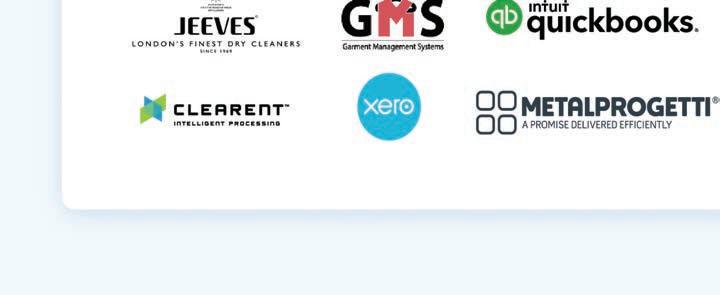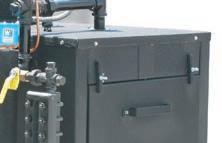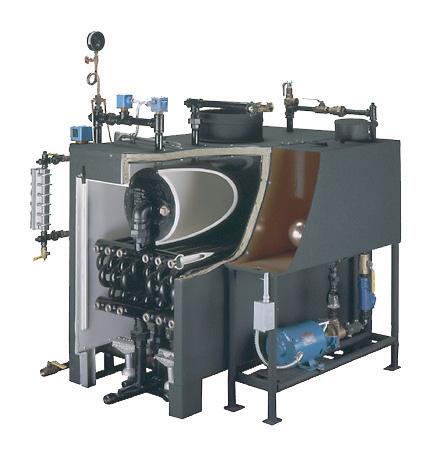






































































































































































“I’d rather light a candle than curse the darkness.” — Anon
Sometimes, we suspect we don’t want to know the answer to a question, so we don’t ask it. Other times, we might not know which questions we should be asking. Either way, we’re running in the dark without the information we need to light our path — and, no matter how scary we fear that path may be, the darkness gives those fears more power than they’d have in the light.
Publisher
Charles Thompson
312-361-1680 cthompson@ATMags.com
Associate Publisher/ National Sales Director


Donald Feinstein 312-361-1682 dfeinstein@ATMags.com
Editorial Director
Our main feature for this month, “Customer Feedback,” is about gathering the information you need to get an accurate view of how clients experience your business and service. While one school of thought is that “no news is good news,” this isn’t the way to run a modern business. While some customers might let you know when things didn’t go well, many — perhaps most — will never let you know they were unhappy. They’ll just go to a competitor next time, taking their business, and their valuable feedback, with them. Or they might blast their grievances on social media and review sites. “No news” can turn into “bad news” in seconds.
DavisRather than hoping for the best, asking the right questions, even if they might be difficult, will reveal the way forward.
Our second feature of this issue, “Subscribing for More Options,” looks at subscription and membership programs some dry cleaners are offering. By selling wash-dry-fold and other offerings as solutions rather than simple services, they are taking chores off their customer’s plates while adding dependable sources of income to their own bottom line and enriching the worth of their business.
And, we’ve recently revamped our website — www.americandrycleaner.com — for a more streamlined look and improved performance, while still providing all the information and features you’ve come to expect. If you haven’t seen it, check it out!
Keep lighting candles along your path — you’ll better reach your destination.
American Drycleaner (ISSN 0002-8258) is published monthly except Nov/Dec combined. Subscription prices, payment in advance: U.S., 1 year $50.00; 2 years $100.00. Foreign, 1 year $120.00; 2 years $240.00. Single copies $10.00 for U.S., $20.00 for all other countries. Published by American Trade Magazines LLC, 650 West Lake Street, Suite 320, Chicago, IL 60661. Periodicals postage paid at Chicago, IL and at additional mailing offices.
POSTMASTER, Send changes of address and form 3579 to American Drycleaner, Subscription Dept., 125 Schelter Rd., #350, Lincolnshire, IL 60069-3666. Volume 89, number 5. Editorial, executive and advertising offices are at 650 West Lake Street, Suite 320, Chicago, IL 60661. Charles Thompson, President and Publisher. American Drycleaner is distributed selectively to: qualified dry cleaning plants and distributors in the United States. The publisher reserves the right to reject any advertising for any reason.
© Copyright AMERICAN TRADE MAGAZINES LLC, 2022. Printed in U.S.A. No part of this publication may be transmitted or reproduced in any form, electronic or mechanical, without written permission from the publisher or his representative. American Drycleaner does not endorse, recommend or guarantee any article, product, service or information found within. Opinions expressed are those of the writers and do not necessarily reflect the views of American Drycleaner or its staff. While precautions have been taken to ensure the accuracy of the magazine’s contents at time of publication, neither the editors, publishers nor its agents can accept responsibility for damages or injury which may arise therefrom.
Bruce Beggs 312-361-1683 bbeggs@ATMags.com
Editor Dave Davis 312-361-1685 ddavis@ATMags.com
Digital Media Director
Nathan Frerichs 312-361-1681 nfrerichs@ATMags.com

Mathew
American Drycleaner, August 2022 www.americandrycleaner.com

sights into pleasing your customers, as well as provide fresh ideas for future growth.





When running a drycleaning business, it can be easy when performing day-to-day tasks to lose sight of some of the important fundamentals that will allow you to achieve long-term success. Getting feedback from clients can be one of these elements that often goes missing in the wash.
Without knowing what your customers are experiencing at your company, you are operating in a vacuum. Just as you wouldn’t drive a vehicle with the windshield covered and “hope for the best,” feedback, both positive and negative, can offer you valuable in-

“Feedback is part of our lifeline,” says Michelle Windsor-Baughman, who co-owns Dutch Girl Cleaners in Walnut Creek, California, with husband Joe Baughman. “It determines your successes and failures. Feedback generates growth if used properly. Our industry is a service-driven one and should be treated as so.”
“All feedback is important,” says Jason Loeb, owner of Sudsies Dry Cleaners in Miami. “If you don’t have any feedback, create feedback. Feedback improves everything.”
“One of the most important factors that attracts customers to our dry cleaners is the feedback that we have that is public,” says Elton Cerda, owner of DryClean NYC. “I really believe that Google Reviews are the
What your clients are saying can shape the future of your business(Photo: © sdecoret/Depositphotos)











most important — and the biggest magnet — for our new customers.”




Tracking customer behavior can be a good measure of how they feel about your business.
“Nothing is better feedback than referral sources,” Loeb says. “It’s hard to track that, but when someone refers you, it gives you a pulse on what’s going on in your business. One of the fundamentals is to measure how many new customers you get. Every time we get a new customer, we asked how they heard about us. Google? Word-of-mouth? Online? Whatever it is, we track it.”



When Jonathan Bence purchased Port Huron, Michigan-based Troy Cleaners, he found that the business, in operation since 1873, was lacking in a vital area: communicating with customers. As a former engineer in the U.S. Army, he knew he had to get to fix this issue.
“When I started, the biggest complaint wasn’t about pressing quality or getting stains out; it was that people couldn’t get a hold of us on the phone,” he says. “Text messaging and other forms of communication are important, but the traditional forms are also important. We had several 1- and 2-star reviews saying that we never answered the phone.”
Bence put in a software-based telephone system with recorded information like store hours — the No. 1 question he was getting — and keeps the phone ringing until someone answers. “It gives our customers some comfort knowing that they can get a hold of us.”
This effort to maximize communication is crucial, Bence believes, because it can provide answers to a fundamental question: “What can we do to make their lives easier? Because we sincerely believe if we can do that, then they’ll either send more business your way or give us word-of-mouth advertising. We’re happy when people are happy with us, but I believe there’s always room for continuous improvement. That’s something I learned from the engineering industry.”
Matt Simon, owner of Pierce Cleaners in Columbus, Ohio, agrees with Bence’s outlook on feedback.
“I’m looking for problems that my target customers might have,” he says. “If I can, I can hopefully start developing solutions to those problems. When you can come up with those solutions, they are going to pay you, and pay handsomely for it. That’s the kind of feedback I want to hear.”
One such client encounter allowed him to pursue an idea that rapidly paid off: “I was talking to a target client at church, well before the pandemic, and she mentioned
that her son, who was in college, had too much classwork and not enough time for it. She said she would even pay for someone to do her son’s laundry while he’s in college. The conversation continued, and about a month later, we started our wash-and-fold service.”
Part of having the proper mindset is to understand that any feedback — positive or negative — can lead to both short- and long-term improvements. You just have to be willing to listen.
“No one wants to say, ‘Just give me all the bad stuff you think we’re doing,’ but the most valuable feedback is when someone says what we’re not doing up to their standards,” says Joe Baughman. “It might be that person’s opinion about something that we’re still doing correctly. They might not like the way we fold something, or they might not like the clips we use. But getting feedback from someone might allow us to change or innovate.”
“If you’re not doing anything with feedback — if you’re not making the corrections or you’re not telling the staff how great they did — then it has no value,” Windsor-Baughman says. “I think every complaint is an opportunity to exceed the expectation of that client. I can be offended all day long, but being offended doesn’t bring money in the door. It doesn’t keep my machines running or keep my staff operating and paid.”
“Every time we serve a customer, they get an email and/or a text asking how our service was,” Loeb says. “If they liked it, we ask them to post a review. If they’re unhappy with it, it goes to my manager, and then he gets to respond. We ask what went wrong. We call it ‘service recovery,’ and service recovery is not a bad thing. I’d rather them tell us than to tell somebody else. You have the chance to fix it and create the experience. I’m in the experiential business. I want to create an experience for my guests.”
If you’re asking honest questions, you need to be ready for honest answers if you want to grow, Windsor-Baughman says.
“You have to be able to swallow the humility pill,” she says. “Ask yourself what you want to be. Do you want to be good? Do you want to be excellent? Or do you want to be legendary? We want to be legendary. We want to be talked about through our community, and we want to be referred. That’s being a legend.”
Knowing how to weigh people’s opinions, however, is also vital, Bence says. He believes that it’s important to keep in mind the 80/20 rule — 80% of your



































































business typically comes from 20% of your customers — when receiving and soliciting feedback. It’s also possible to go deeper than that.
“About 19.5% gives us 80%, and I believe our top 5% give us about 40% of our sales,” he says.


“So, every decision we make is mindful of what the top 20% think. If they start telling us things, we pay close attention, because they’re the ones who are driving our business. My retail team leader or manager will call the top 5% twice a year just to ask how things are going and if there’s anything we can improve on. I’ll personally call the top 1% just to tell them we appreciate their business and ask for any suggestions.”
Feedback can come from many sources. It could be as simple as asking a customer their thoughts over the front counter as they pick up their cleaning. It could come from reviews, or could be part of a multi-channel marketing plan.
Cerda says he’s seen the methods available for communicating and gathering customer feedback grow in the two decades he’s been in business.
“Many years ago, in either feedback or communication, we used to call the customer,” he says. “Now we primarily text — we do it instantly after they leave the store. We also do one or two follow-ups. We will send a text followup, and then we do an email follow-up after that.”
There are point-of-sale systems and other software platforms available that help cleaners send feedback requests and gather responses in an automated process, so it doesn’t fall by the wayside when things get hectic.

One of these platforms is ReviewMyDryCleaner, a reputation management tool that, among other things, allows cleaners to communicate with their customers. It integrates with services such as Facebook Messenger, Instagram, Google Maps Messages and others to bring feedback all into one place.




“This platform can automatically send a review request out directly to the customer as soon as a pickup or delivery happens,” says Yash Patel, reputation manager at BeCreative360, the company that created the software, along with SPOT Business Systems. “The customer can leave either a review or give the business direct feedback. This feedback comes right into the platform, and not online, so that if there are any issues, the business owner can take care of it.”
Cerda believes systems such as this make generating and gathering feedback much easier than when he started in the industry.
“You have to find the tools or the point-of-sale system that does it for you,” he says. “As valuable as feedback is, hiring a person to do manual feedback collection is very difficult and costly. There are tools out there that can help you do this automatically. Obviously, if you need specific feedback about a specific item or a short campaign you’re doing, it might make sense to have a person doing it, but as an alternative to capturing ongoing feedback, a live person is very costly and maybe not very efficient. You have to get the right tools in place.”
Of course, having the tools and using the tools are two different things, Loeb says. His stated goal for his management team is to use 100% of the tools in Sudsies’ POS.
“Sure, it might not be possible to use it 100%, but I’ve challenged them to use all its features,” he says. “If they don’t know what that feature is, I want them to figure it out. And if they don’t want to use the feature, I make them tell me why they don’t want to it. But the software has the capability of streamlining the questions you ask the customer. So, everything is information. We want to gather all that information to provide that level of service to get better reviews.”
Still, older methods still can be valuable avenues of communication.
“We do more with paper surveys attached to customer orders, with a focus on sending them to our top 20% of our customers,” Simon says. “They are the ones we focus on most, so we’ll listen to them more than someone who just brings in one shirt once a year. They generally have a better idea or understanding of our operations, and thereby can provide more thorough and educated feedback.”
Simon also believes in the personal touch.
“When it comes to getting customer feedback, nothing beats a phone call or a counter chat with the customers,” he says. “If I see one of our top customers come in, I’ll walk up and see how they’re doing and what they think. If you talk to enough people, you’ll know that others might feel the same way, and you can make operational decisions based on those thoughts.”
In addition to the top 20%, Windsor-Baughman says that it’s important to make sure new customers — who might one day enter into that 20% level — have a great experience.
“Every first-time customer deserves to know you care how their experience went,” she says. “We call after their order has been picked up or delivered to inquire if we met these expectations. If they say the service was







Upload pictures, track deliveries, and submit order status updates from anywhere, at any time.
Root out employee theft and increase accountability through machine learning and cash box security.
SMRT generates reports for every metric of your business. Access analytics 24/7.
Keep your data safe with industry-leading security encryption, threat monitoring, and detection.
Powerful communication tools and Interactive technology effortlessly combine innovation with quality customer service.
Upload pictures, track deliveries, and submit order status updates from anywhere, at any time.




great, you reward the feedback with 20% off the second visit. If they say the service needs improvement, we ask them to give us another chance to meet or exceed their expectations with 20% off their second visit. More than 90% of customers who are dissatisfied with your service will never complain — they simply move on.”






Gathering feedback is great, but not acting on it renders it useless, Windsor-Baughman says.

“You’ve got to ask yourself, what is your plan for the feedback? Put together what your plan is — what you are going to do with this feedback. If you’re just going to collect it, and then put it in a filing cabinet or in a drawer, then don’t waste your time. If you want to grow your business, though, this absolutely is the avenue.”
“We basically use feedback for training,” Baughman says. “It’s valuable to be able to take that criticism or feedback — positive or negative — and show or correct our staff. It’s probably the most valuable thing that could be provided to your business.”
“Negative feedback comes directly to me, and I address it as immediately as I can,” Cerda says. “Sometimes it’s been just a minute after they posted. I tend not to reply via text — I just call the customer. If I get voicemail, I will leave a message, and then I reply via text. I tell them I called to follow up, give them my cell phone number, and let them know that I’m looking for a way to resolve this. Customers will get frustrated if you don’t get back to them on time. I have never found that an issue just goes away.”
Patel believes that when customers are given a platform to communicate problems, this is valuable information for cleaners, because it gives them the opportunity to fix those problems rather than allow those customers to fade away.
“When you receive negative feedback, just absorb it,” he says. “Talk to your team about it, figure it out, and fix it. Accept feedback for what it is, and don’t take it to heart, because all feedback is good feedback.”
There are many reasons why dry cleaners don’t seek feedback — or why they limit their efforts. For many, the fear of being stretched too thin keeps them from reaching out.
“For me, the biggest hesitation was that I just thought I didn’t have time to do it,” Bence says, but he soon reconsidered that idea. “It’s just important to start. Once you start, then at least you are doing something instead of nothing.”
Bence believes that getting the proper tools in place can help minimize the fear of limited time.
“Build it on a good foundation. Get a POS that can help track some of that stuff, or at least have some sort of organizational system and good note-taking. Make time to visit issues. Take half an hour in the morning to write some handwritten notes to your top 20% to thank them for coming in and supporting you. It’s marketing, but it’s also communications, and that’s important.”
“One mistake cleaners can make is thinking that asking for reviews via email or SMS makes the customers upset,” Patel says.
Since everyone is bombarded with spam calls, texts and emails, cleaners sometimes think that they will anger the customer by adding one more to the pile. Patel doesn’t agree.
“When the customer sees that request, they think, ‘This is a business I normally go to — let me go ahead and open it.’ And they are more likely to give you that feedback and review.”
Rather than asking for feedback, Windsor-Baughman says she once was focused on other things.
“For years, I was just trying to generate marketing to get them in the door,” she says. “Then, when COVID started, you could do all the marketing you want in the entire world, and they’re still not coming through that front door because you don’t have a reason to. They’re not cleaning.”
This realization brought the Dutch Girl owners a change in mentality.
“As things started to release, Joe and I took a completely different approach. And he started saying, ‘We need to get feedback. We need to get reviews. We need to understand what we’re really good at and where we can improve. We need to keep doing what we’re good at and focus on marketing those things, and we need to fix the things that we’re not good at so that we can change that to a marketing effort as well.”
This change has proven to be a turning point for their business.
“You can offer 99 cents shirts all day long,” she says. “You can offer every campaign possible. But if you don’t know how well you’re operating, and in what areas, all that money is wasted when they walk back out the door.”

 By Dave Davis, Editor
By Dave Davis, Editor





When business owners can make their production flow more predictably, they can better plan for staffing, supplies and equipment use.
When customers can make their daily chore load easier, they can have more time to do what they need to do — or enjoy doing — without worrying about the drudgery of routine tasks.

For some dry cleaners and their clients, their wishes intersect through subscription programs.

Lisa Brooks, who owns a Mulberrys Garment Care franchise in Minneapolis-St. Paul with her husband, Chris, says subscription services were already part of the business when they purchased the franchise in 2020. She believes in keeping the process simple both for the cleaner and for the consumer, electing to charge by the bag instead of the pound.
“We’ve tried to make it a very customer-friendly service,” she says. “People generally don’t know how many pounds of laundry they have. With bags, they can get a good idea of how much laundry they want to do. In most cases, the plans are four bags a month, which works out to roughly one a week, but they can use them in any cadence that they’d like.”
In addition to the Minnesota stores, the Mulberrys chain has franchise stores in San Francisco, where customers more quickly adopted a subscription plan.
“When we purchased the business, there weren’t many customers in Minneapolis using it, but the California branch had quite a big subscription service for wash and fold at the time,” Brooks says. “It’s really just now gaining traction in Minneapolis, and it’s grown pretty significantly since we took over the business.”
For Kermit Engh, owner of Fashion Cleaners in Omaha, Nebraska, the search for increased business during the pandemic marked the path that led to subscription services.
“Right after COVID started, we became pretty ag-
gressive in offering a wash-dry-fold program for clients, and one of the decisions we had to make — which every cleaner who does this has to make — is how are we going to charge for this? Do we do it on a per-pound basis, or a per-bag basis? We elected to do it per bag because we didn’t have to worry about having certified scales that would have to be checked every year by the government.”

Subscriptions are popular with her customers, Brooks believes, because it gives them back the one thing they simply can’t produce more of — time.
“The subscription is great for people who really want more free time and looking to outsource their chores,” she says. “Laundry is a huge chore as far as time goes and requires you to be home. This service was really designed to make our customers’ lives easier and allow them to have the free time to do whatever they’d like to do.”
Brooks says this type of service also helps with household accounting: “Subscriptions are easier for budgeting from a customer perspective because if you’re on a subscription, you know what it is for the month. They’ve taken care of their laundry, and they have a consistent schedule.”
“In the early days of COVID, we also focused on selling the idea of safety and cleanliness,” Engh says. “We were able to provide laundry sanitization on a commercial level to homeowners. Today, though, we focus on time and convenience, because that’s really what we’re selling.”
Both Brooks and Engh find that those taking advantage of their subscription services cut a wide swath across demographics.
“We have dual working families and young families, but we also have a decent market of seniors,” Brooks says. “If seniors are staying in their homes, but their laundry is in the basement, or if it just gets heavy or hard for them to do it themselves, we definitely have a segment there. We also have some working singles — people who, again, would rather be doing other things
When








with their time if they’re working long hours.”
“For us, it’s mostly working couples and upper income, but we have a lot of singles,” Engh says.

“It’s anybody who values time over money — and that could be a lot of different people. Again, who likes doing laundry?”

With a properly designed and operated subscription service, dry cleaners can realize benefits of their own, as well.
“One of the advantages of having customers on a subscription plan is that they are ‘stickier’ customers,” Brooks says. “Once you’re in a subscription, you’ve really bought into that service. It also helps better predict demand and plan staffing, as well. When you know you’re going to have a certain number of pickups or bags coming in once a week or twice a week, you can staff better for that.”
There are also long-term benefits, Engh believes.
“Subscription services add great value to a business,” he says. “The more routine subscription money that is coming into your company, the more valuable it is. This is an area where dry cleaners can add value to their companies by providing a service that they already do, but treating it differently — as a subscription as opposed to a one-off service.”
Both Engh and Brooks have found that running an individual process for subscription services works best for them, even if it took some effort in the beginning.
“In our cleaning lab, we set up a totally separate area,” she says. “Originally, it would flow in with the same machines that did the laundry shirts and other things. But we wanted to keep things separate, so we invested in buying additional small, more home-sized washers and dryers, which let us do a higher volume of small loads. This prevents us from having to mix customer loads together. This makes the flow easier instead of crossing back and forth.”
“We now have a dedicated person who does nothing but folds clothes, so that was new,” Engh says. “It really had more to do with the equipment. When we started having hundreds of pounds of wash-dry-fold come through daily, we were not set up for that. We were a bit blessed in that we had done fire and water restoration work for the last 20 years, so we were a little bit more accustomed to doing large quantities of bulk laundry, but when we added the subscription work that took us over our limitations, we had to add equipment.”
Part of a successful subscription service is making sure everything is as automatic as possible, and that includes billing.
“You’ve got to make sure that your point-of-sale system has the ability to auto-bill folks at the beginning of each month or track their usage,” Engh says. “If they are over for the month, they need to be charged — the billing is critical. You need to get paid for your work.”
No matter how well the business is set up, though, subscriptions can only work when people know it’s an option, and that requires some marketing effort. Engh has used hanger tags on outgoing orders, text and email campaigns, and some radio advertisements to get the word out.

“You don’t have to spend a lot of money on the marketing portion of this like we would on some other services we’ve offered in the past,” he says. “Existing customers are the first place to go because they know your work and they trust you.”
Brooks believes this type of service is one of the easier to market because the advantages are so easy to communicate.
“From the customer’s perspective, they never have to do laundry again,” she says. “If they’re using our subscription, not only can they send us their nicer garments to be dry-cleaned, but any of their day-to-day laundry, including towels, can also be done. They can minimize a two-, fouror six-hour-a-week task into a 10-minute task. ”
Engh and Brooks believe they are just getting started with subscription services at their businesses. Selling subscriptions as a solution rather than a service is key to this belief.
“As people really get back to work, they’ll really understand the value of their time, versus the cost we charge,” Engh says. “All of a sudden, this looks like a pretty easy sell. I know a lot of dry cleaners around the country, and their piece counts are getting close to preCOVID numbers, but their revenues are higher. We’ve been able to find ways to adapt, and subscriptions were one of those ways.”
Shifting priorities and different ways of viewing available options will be the way subscriptions at the Minnesota Mulberrys evolve, Brooks believes.
“We’re in Minneapolis, where we tend to be a little more conservative,” she says. “When I was growing up, nobody had house cleaners unless they were wealthy. And now it’s pretty standard to have somebody come in and clean their house — it’s just one of those chores they’ve outsourced to save time and energy. So, I’m expecting to see the same type of thing with the daily laundry, where people just move to outsource it, deciding that either their working time or their leisure time is more valuable to
them. I do think we’ll probably get more of the seniors, as well, as they continue to stay in their own homes.”

When considering putting a subscription service in place, it’s important to think through how it would work at your business, both overall and from a day-to-day perspective, Engh says.
“You need to decide if you’re going to charge per pound or per bag,” he says. “Once you make that decision, you have to start to think about what your capacity is to add bulk laundry to your normal daily routine. When I come in the mornings and I see the mountain of mostly big bags, my first thought is, ‘How in the world are we going to get all this stuff done today?’ But we do.”


Engh believes that taking an honest look at your equipment and your surroundings is also a must.




“You have to have the machine capacity, you have to have a little extra space, and you need to have areas to fold these items,” he says. “You also need areas to store the work prior to it being delivered or picked up. So, you have some space constraints you need to be aware of if you’re going to do this in any meaningful way.”
One thing that Brooks had to focus on was making sure clothing came back to customers in the uniform manner they expect.
“Make sure that it’s consistent,” she says. “That was one thing that we had to really push. If you have multiple people working on it and they start folding things differently each time, the consumer isn’t getting back a consistent product.”
Most of all, Engh believes that it’s best to slowly roll out subscription offerings until you understand what the process will actually look like in your store.
“If you’re not doing it, think it through and plan it out,” he says. “Execute slowly until you get your internal systems running smoothly, instead of saying, ‘Let’s open the door, and gangs away’ — that will be a recipe for disaster, I can assure you.”
Still, Engh believes the effort will be worth it.
“I would certainly encourage any of the progressive, successful planners out there, that this would be another add-on, which absolutely does add value to your business. Not just to your current bottom line, but the actual value of your business when the day comes when it’s time to retire or time to transition.”
Tech giant providing courses on marketing, tech support and more
MOUNTAIN VIEW, Calif. — As technology advances and there are more ways to connect with customers than ever, some dry cleaners are adding staff positions that past generations would never have considered. The demand for team members trained in marketing, data analytics, web and graphic design and more has never been higher, and Google’s recent announcement could help fill that demand.
The company is offering access to its Google Career Certificates training courses to U.S. companies at no cost for up to 500 employees per company. The courses are usually $39 each per month.
“Technology and business are evolving at a rapid pace,” the company stated in the announcement. “With 87% of companies reporting a skills mismatch now or in the near future, workforce needs are quickly changing. At the same time, it’s becoming harder for businesses to attract and retain talent. Those who create growth opportunities for their employees have a much better shot at retaining them.”
Course areas in this offering include digital marketing and e-commerce, IT support, data analytics, project management and more.
Using Google’s online education portal Coursera, the courses offer video-based lessons, assessments and handson projects, and learners must complete at least 150 hours of study to receive certification. The programs are selfpaced, and Google estimates the online certification pro grams can be completed within three to six months with less than 10 hours of flexible study per week.
Google offers participating companies access to a company dashboard to monitor their team members’ process, as well as a program guidebook and email customer service. Those taking the classes can also access customer support and receive full instruction and tips for success after they get started.
The program is open to U.S. companies of any size through Dec. 18, 2024. For more information or to request scholarships, visit www.coursera.org/googlecertificates-for-business.
October event to showcase the latest technology and ideas in textile care
MILANO, Italy — Pre-registration is now open for EXPOdetergo International 2022. The international exhibition, which will focus on machines, services and products for laundry, ironing and textile cleaning, will take place at Fiera Milano, Italy, on Oct. 21-24, 2022.
This exhibition — titled “Reset. Restart. Together.” for 2022 — is held every four years in Europe, and is dedi cated to machines, technologies, products and services for laundry, dry cleaning, ironing and textile cleaning. It is or ganized and promoted by Expo Detergo and Fiera Milano.
This will be the first EXPOdetergo International after the pandemic, and will be crucial, organizers say, in charting the course of the industry as it moves forward. While the pandemic boosted the sector’s role as an essential service for public health, it also changed the balance between supply and demand. How the industry reacts to changing trends and consumer demands will chart its course for the future.
Central topics to be covered in depth for this event are sustainability, digitalization and hygiene.
More than 200 companies are scheduled to take part in this year’s event. EXPOdetergo International is designed to provide a comprehensive view of the vast selection of products available on the market today, including new technologies, products and services for textile maintenance. Visitors will be able to see different machines in operation, as well as get a look at the results of exciting advancements in research and development efforts by leaders in the industry.
Those wanting more information or wishing to attend the event can visit its website, www.expodetergo.com.



The CINET Global Best Practices Awards highlight the efforts of the best of the best in the global textile industry — and nominations for this year’s event are being accepted.

CINET, an international association of the professional textile care industry, sponsors the awards, presented every two years to highlight industry best practices and demonstrate the textile care industry’s capabilities and focus on a high standard of quality, new business services, innovation, and sustainability.
The award will be presented at ExpoDetergo in Milan, Italy, Oct. 21-24.
Entrants are graded in areas including sustainability, innovation and overall best practices at the retail textile cleaning (RTC), industrial textile services (ITS) and franchise levels. In addition, young entrepreneur, corporate social responsibility (CSR) and lifetime achievement awards will also be presented.
An independent jury evaluates the nominees for the Global Best Practices Awards on various criteria:

• Quality — This considers the skills and knowledge that go into maintaining textile quality. Training, education and labor policies are all considered in this area, as well as certifications, if available.

• Sustainability — Operating a safe and sustainable cleaning operation is another key element for consideration. This includes using state-of-the-art equip ment, modern cleaning concepts, optimal working methodologies, and integrated ICT processing to enhance safe and sustainable professional textile care.
• Business Model and Service Concept — To be considered for the award, cleaners must meet customers’ demands and expectations in a rapidly changing market environment. A clear business model for modern professional textile care is required to excel. The right services contribute to the ease and convenience of customers.
• Innovation — Staying current and being a leader in the textile market requires innovations in services, implementation of new tech nologies, and creative entrepreneurial efforts to cope with new customer demands. The ability to stay current — or be a leader — in this area figures into the jury’s decision.
Additionally, owners must be able to offer explanations and provide evidence that their business meets these criteria.
Florida’s Oceanside Cleaners received the CINET Global Best Business Practices Award in 2020, the first North American company to do so.

“We are beyond excited about the award and promise that we will continue to push ourselves and the industry to become better at sustainability, innovation, and improving day to day with our culture,” said Oceanside Owner Michael Harris when receiving the award. “We will take all the information that is being presented to us seriously and use it to enhance our daily lives.”
For more details about the Global Best Practices Awards or for registration information, visit the CINET website at https://www.cinet-online.com. The deadline for applications is Sept. 1.








2022 RATES: One- to five-time rate: $2.20 per word, boldface $2.30 per word. Minimum charge: $25.00 per ad. Call or write for our three- and 11-time rates. If box number is used, add cost of 5 words. Display classified rates are available on request. All major credit cards are accepted.




Ads must be received by the 1st of the preceding month. For example, for a June ad, the closing date is May 1st.







10 YEARS

— As summer got into full swing, beating the heat was the topic of the American Drycleaner Wire survey. When asked how they made their drycleaning plants more tolerable during summer, portable fans were the most popular choice, used by 57.1%, with swamp coolers running a close second at 47.6%. Other cooling equipment utilized included spot cooling systems (23.8%), air conditioning (14.3%) and portable evaporative coolers (4.8%). Only 4.8% of respondents said they didn’t use any of these cooling devices in their plants.

25 YEARS AGO.
Clean — From the standpoint of attendance, exhibit space, international participation and educational session participation, Clean Show ’97 was a record-shattering event. The show, held June 2-5 in Las Vegas, boasted total registration at 26,394, up 1,754 from Clean ’95 in New Orleans. There were 546 exhibitors, 155 of which didn’t exhibit in the 1995 show. “We’ve come close before — this is the first time the Clean Show actually sold out,” said John Riddle, present of Riddle & Associates, the show’s management company. “We had a waiting list of companies wanting to exhibit.”
50 YEARS AGO. Derby City Drycleaning — An effort to remind the public of the value of dry cleaning in today’s wash-and-wear world was successfully launched in Louisville, Kentucky. More than two dozen retail dry cleaners banded together in an organization for mutual profit and public education — GLAD (Greater Louisville Association of Drycleaners). The Association’s logo appeared on the windows of 75 dry cleaning outlets in the Louisville area, and the organization’s educational and sales campaign was designed to spark new interest in professional dry cleaning.


75 YEARS AGO. Falling Profits — According to the annual cost figures released by the National Institute of Cleaning and Dying, cleaners didn’t earn as high a percentage of profit in 1946 as they did in 1945. The percentage drop was slight — net profits fell from 12.12% in 1945 to 11.23% in 1946, while production costs rose from 55.97% to 57.25% in the same period. It was noted, however, that in dollars and cents profits, the average cleaner was probably better off in 1946 because of a general increase in volume.
— Compiled by Dave Davis, EditorProductshaveproventolastupto10timeslongerthan similarproductioninthisindustryandapplications.








Wehavemanyinstallationswithsteamboilersthathave beeninserviceforover50-years,10hoursperday.
Thematerialsusedincurrentproductsarebetterthanthe materialsused50yearsago.Forexample,inthe80’s, steam drumwentfrom3/8”thickto1/2”thick.
Ourheatingsurfaceoramountofsteelabsorbingenergy has alwaysbeen2to3timesthatofotherunits(upto6sf ofheatingsurface per boilerhorsepower,whichsomeunits arecloserto2sfofsteel per hp,andsomeeven1sf).





Wehavethebestdistributedflameormostevensurface areaevenlydistributedundertheentirepressurevessel. It isalsoamodulardesign,so it canberepairedeasily.
Tube materials were upgraded from seamlessrated pipe to seamlessrated tubing. Material is not only thicker, ends up .133 wall, but is annealed which give the surface on both sides a mill scale coating that is more resistant to corrosion and is long lasting from testing.










